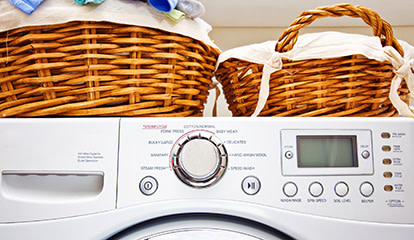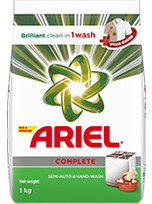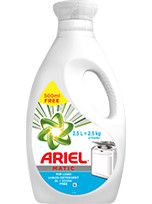Buying a washing machine is a surprisingly complex decision, especially since no household has the same laundry requirements. Before you buy a washing machine, there are a few factors you need to consider, including the type, price, and size of the washer, which can make it difficult to decide on the one that suits all your needs. Worry not, for Ariel is here to save the day with its comprehensive guide on how to choose a washing machine!
What are the different types of washing machines?
What’s a semi-automatic washing machine, what’s the difference between semi-automatic and fully automatic washing machines, and why are top load washing machines better for people with less space in their apartments? Read on to find out!
Fully-automatic washing machines: A fully-automatic washing machine does everything at the touch of a button. This washing machine comes with a single tub that acts as a washer, dryer and also rinses the clothes. These can come as front and top load machines, and the programs and efficiency can also vary between the machines, depending on the brand.
Semi-automatic washing machines: Unlike the fully-automatic washing machines, semi-automatic washing machines are only partially automatic washing machines. This means that you will need to do some parts manually, like fill up the water in the tub before starting the machine, or if you have a twin-tub semi-automatic washing machine, you’ll need to move the washed clothes into the drying tub. These are always going to be top loading.
Front load washing machines: A front load washing machine is a fully-automatic washing machine that loads from the front side. These machines usually consume less water and energy, and usually yield better laundry results than their top load counterparts.
Top load washing machines: Both manual washing machines and fully-automatic washing machines come in a top load form. These kinds of machines are loaded from the top. This is good for people who want a machine in which they don’t need to bend down completely to load the clothes in the machine. Fully-automatic top load washing machines usually take up less space, so they’re good for people looking to fit a washing machine into a narrower space.
Front load vs Top load washing machines
Check out the below comparison table on the differences between front loading and top loading washing machines to see which one fits your place better!
| Front load | Top load | |
|---|---|---|
| Pros | • Larger capacity • Better cleaning performance • More cycle options • More energy efficient • Use less water • More efficient drying | • Can add laundry mid-cycle • Shorter wash cycles • Minimal vibration • Simpler control panel • Costs less • Fits into smaller places |
| Cons | • More expensive • Longer wash cycles • More vibration during spin cycle • Water can get trapped inside, causing malodor | • Lower cleaning performance • Uses more water and electricity • Smaller capacity • Longer drying time |
Washing machine dimensions
Height, width, and depth are the main dimensions you’ll have to take into account when deciding what type of washing machine to buy. The most important question you’ll have to ask here is how much space do you have?
If you only have a tight or narrow space in which to install your washing machine, this may factor into your decision when it comes to picking the right washer. For example, a top load fully-automatic washing machine may be narrower than a front loader of the same type, which means it’s more suitable for you if you happen to live in a smaller apartment. To make sure you choose the right type of washing machine to your home, take a look at the below image guide, showcasing the usual dimensions of a typical top loader and front loader.
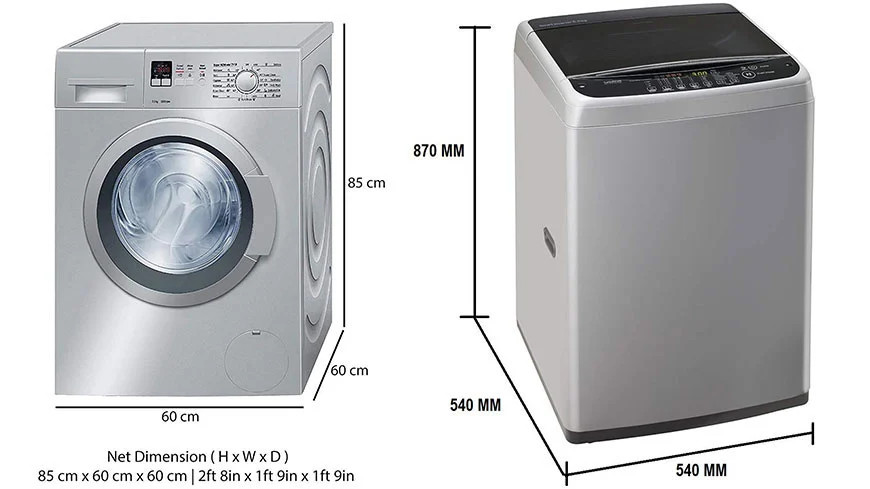
Be extra precise when measuring the space you’ll have to fit your washing machine, as even a millimetre can make a difference. Whether you’re planning to buy a top or a front loader, make sure you have enough space for the washing machine’s door to open, and leave at least 2.5 cm breathing room on each side of the washer.
What size washing machine do you need?
Do you have a big family? The size of your household and projected laundry loads play a big part in your washing machine requirement. You can get a variety of washing machine sizes:
A washing machine with a capacity of 6-7kg should be ideal for a family of four,
In case of fewer people in your house, opt for a smaller machine,
And if you’re a bigger family, then choose a larger washing machine.
Additionally, if you live in a house filled with curious children, you may want to buy a washing machine that comes with child lock functions. This can either be on the door or a program that can’t be changed once the machine is going.
Ease of use and other features
If you’re buying your first washing machine or you find some aspects of owning a washing machine overwhelming, you might want to prioritise ease of use when choosing a washer. When it comes to which washing machine is good for you, see if the machine you’re looking to buy has a clear and functional control panel that makes it easier for you to use.
Washing machine features
Various features, like speeds and settings, depend on what you’re looking for in a machine. For some, having too many features can make things confusing. Possible features include:
Specific cycles catering to whites, woolens, and delicates, using different temperatures and spin speeds to give you a gentle but thorough clean,
A time-delay, which lets you postpone the start of your wash to whatever time is convenient for you.
Some ultra-modern machines even have sensors that do things automatically so you don’t have to worry about getting the right program in gear.
Choosing an eco-friendly washing machine
If leading an environmentally conscious life is important for you, you might want to look into buying an eco-friendly washing machine. Having an economical washing machine is not just good for the environment, but can also help you with the bills.
What detergent should you choose?
No matter which type or size of washing machine you choose, it’s important to use the right kind of detergent that caters to your laundry needs. Using a hand wash detergent in a washing machine can leave you disappointed with your laundry results and can even affect the performance of your washing machine.
Ariel detergents are specially designed to meet whatever laundry needs you have and are uniquely formulated to ensure the best performance inside your washing machine. Ariel offers a range of detergents from washing powders to liquid detergents, ensuring you get the best stain removal in 1 wash.

FAQs about washing machines
If the above guide didn’t answer all your washing machine-related questions, our FAQ section will most definitely will!
Related articles

Are you getting the most out of your washing machine?
Your washing machine is a great investment – it cleans your clothes at the touch of a button making both, doing your laundry and your life just so much easier. But are you getting the best out of your machine?

Washing machines vs. the washer / dryer combo – what’s the difference?
You’ve decided to buy a fully-automatic washing machine and while you’re convinced that you need one that does everything automatically, you may be wondering if you want or need a washer and dryer combo?
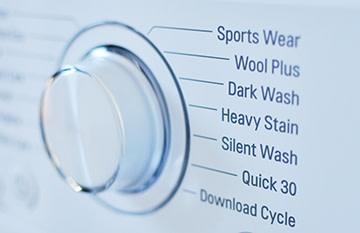
Know your washer – types of washing machines explained
All washing machines have the same purpose – to wash clothes – but when you get into the details about the types of washing machines on the market, such as the difference between top load and front load washing machines, things get a little complicated.

